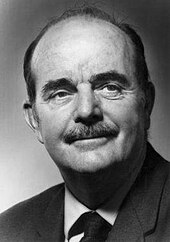

March 28. On this date in 1911, William Sears,
later named a Hand of the Cause of God by Shoghi Effendi in 1957, was
born in Duluth, Minnesota. A popular radio and television personality,
he is perhaps best know for writing the best-selling book, Thief in the Night, which ties the Bahá'í Faith to the fulfillment of Christian prophecy, particularly based on Seventh-day Adventist literature and the teachings of Baptist preacher William Miller. It has been reprinted over twenty times by George Ronald Publisher, an official publishing house of the Bahá'ís Administrative Order.
William Miller,
a Baptist preacher, predicted that on October 22, 1844, Christ would
return to the Earth. Although the prophecy was not fulfilled, leading
to what was called the Great Disappointment, the Millerites would go on to form the various Adventist churches.
Thief in the Night,
argues that Miller's interpretation of biblical prophecies for the
signs and dates of the coming of Jesus were correct and fulfilled by the
Báb who declared that he was the "Promised One" on May 23, 1844, and
began openly teaching in Iran in October 1844.
What
is interesting about these events in general is the manner in which
individuals react. In the classic work of social psychology, When Prophecy Fails,
Leon Festinger, Henry Riecken, and Stanley Schachter studied a small
UFO religion in Chicago called the Seekers that believed in an imminent
apocalypse. They describe the coping mechanisms after the event did
not occur, and their findings have been generally applicable to a wide
variety of scenarios involving cognitive dissonance and true-believer
syndrome.
Festinger describes the basic hypotheses of cognitive dissonance as follows (page 3):
- The existence of dissonance [or inconsistency], being psychologically uncomfortable, will motivate the person to try to reduce the dissonance and achieve consonance [or consistency].
- When dissonance is present, in addition to trying to reduce it, the person will actively avoid situations and information which would likely increase the dissonance.
Festinger
and his co-authors conclude that the following conditions lead to
increased conviction in beliefs following disconfirmation (page 4):
- The belief must be held with deep conviction and be relevant to the believer's actions or behavior.
- The belief must have produced actions that are difficult to undo.
- The belief must be sufficiently specific and concerned with the real world such that it can be clearly disconfirmed.
- The disconfirmatory evidence must be recognized by the believer.
- The believer must have social support from other believers.
Festinger
describes the increased conviction and proselytizing by cult members
after disconfirmation as a specific instantiation of cognitive
dissonance (i.e., increased proselyting reduced dissonance by producing
the knowledge that others also accepted their beliefs) and its
application to understanding complex mass phenomena. (pages 252-259)
When Prophecy Fails was published in 1957, the year that Shoghi Effendi died without having written a will as prescribed in Bahá'u'lláh's Kitáb-i-Aqdas and without having designated a successor Guardian as stipulated in `Abdu'l-Bahá's Will and Testament.
No comments:
Post a Comment